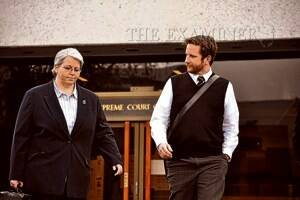

FORENSIC scientists were unable to match a large number of DNA samples taken from the yacht owned by missing medical scientist Bob Chappell and his partner, the Supreme Court in Hobart has heard.
Subscribe now for unlimited access.
or signup to continue reading
Mr Chappell, 65, was last seen on board Four Winds on January 26, 2009.
His partner of 18 years, Susan Blyth Neill-Fraser, 56, of West Hobart, has pleaded not guilty to his murder.
The jury heard evidence yesterday from three forensic scientists who examined the yacht in late January and early February 2009.
Carl Grosser, who specialises in DNA profiling, said some samples taken contained only a small portion of a DNA profile, which meant it was impossible to draw any conclusions from those samples.
The jury also heard a DNA sample was taken from a deck walkway on Four Winds that matched that of a 16-year-old girl, whose DNA profile was added to the Tasmanian DNA database after she was allegedly involved in a stealing matter.
Mr Grosser said the chance of someone unrelated to her also providing a match was less than one in 100 million.
The girl gave evidence yesterday and said she had never been on board Four Winds or in the area of Constitution Dock or the slipyard at Goodwood, where the yacht was taken for examination, at the relevant times. She also said she did not have a twin sister.
Mr Grosser said it was possible for the girl's DNA to be found on the yacht if she had never been on board. He said one way her DNA could have been transferred was as a result of it being present on the sole of another person's shoe.
Ms Neill-Fraser's lawyer, David Gunson, SC, suggested to Mr Grosser that the likelihood of the girl's DNA being accidentally transferred was "far less likely" than her DNA being deposited in her presence. Mr Grosser said he could not rule out the possibility it was accidentally transferred.
Forensic scientist Deborah McHoul told the court she found red-brown staining on steps leading into Four Winds' wheelhouse that appeared to have been transferred from another object.
She also said she found red- brown stains on a wooden panel that appeared to have been effected by a force as it fell.
Ms McHoul said parts of a Quicksilver dinghy tested positive for blood when sprayed with the chemical luminol but tested negative when a second test using a different method was performed.
Mr Grosser said his work also included examination of a red padded jacket.
The jury heard evidence last week that the jacket was found in the Marieville Esplanade area.
Mr Grosser said he found a DNA profile on the jacket that matched that of Ms Neill-Fraser and that the chance of another person unrelated to her sharing the same profile would be less than one in 100 million.













